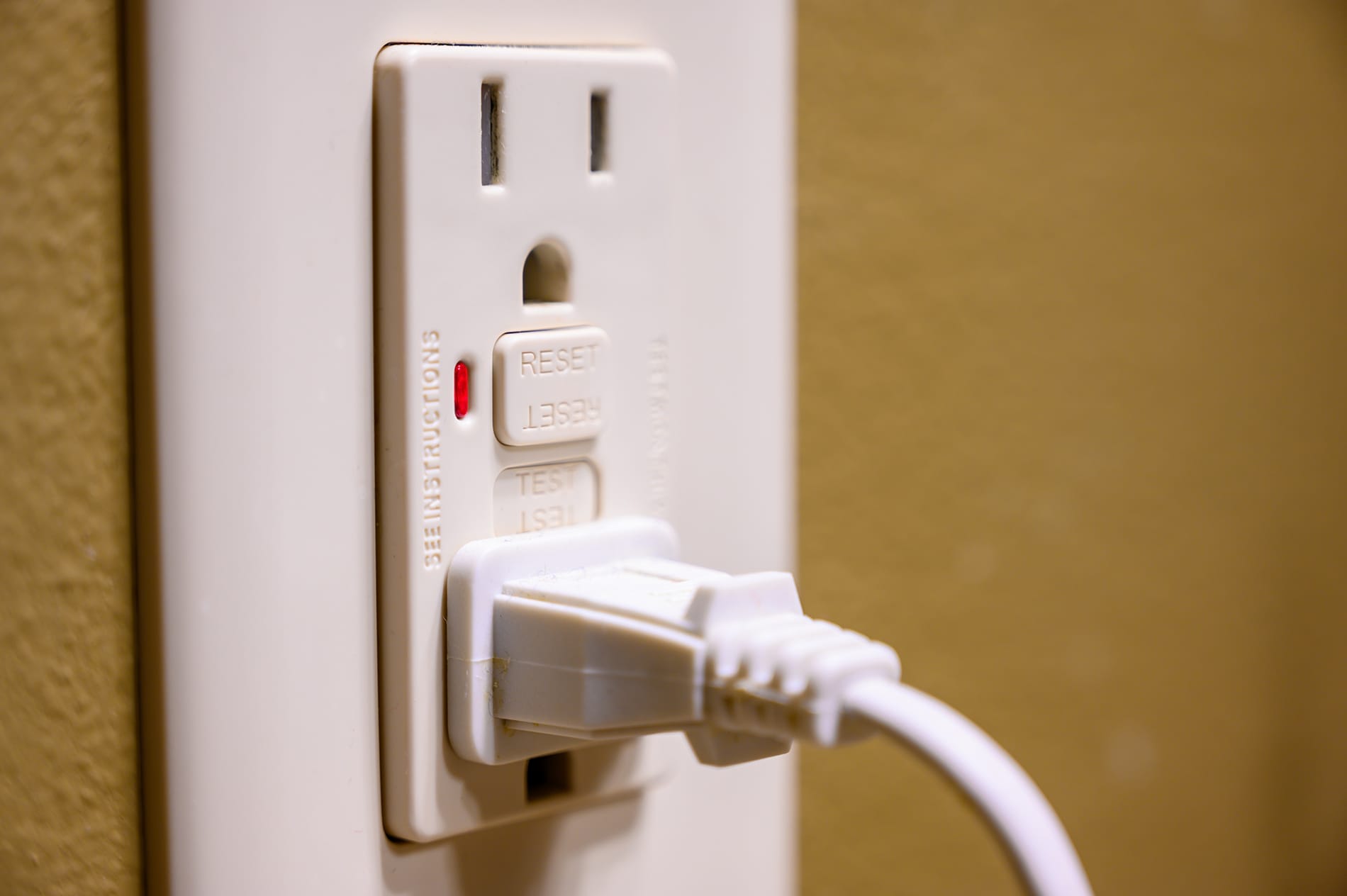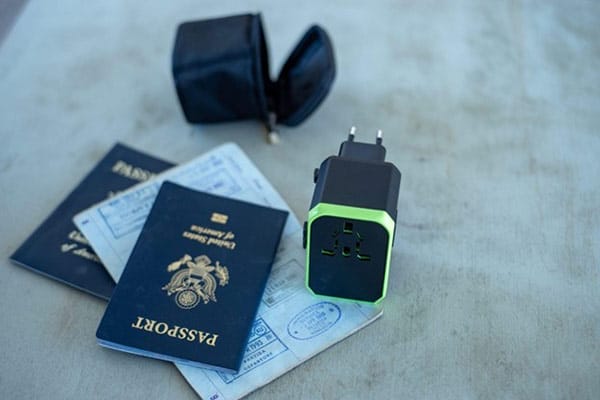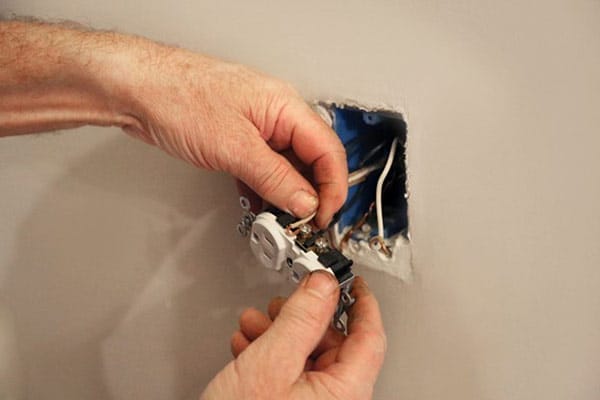Key Takeaways
- There are many types of electrical outlets, so you’ll need adapter plugs for international locations
- Some modern electrical outlets have built-in safety features, such as GFCIs and overload protection
- Professional grounding and wiring are essential for electrical outlet safety
- Damaged or outdated electrical outlets can lead to hazards
Electrical outlets are crucial in powering our everyday lives. Whether it’s an iPad, hair dryer, or a microwave, outlets provide access to the electrical power that flows into our homes and businesses. But not all electrical outlets are created equal. Some now include shock and overload protection, while others offer features like USB ports.
Understanding the purpose and functionality of electrical outlets is essential for ensuring a safe and efficient power supply whenever you plug in.
What’s the Purpose of Electrical Outlets and How Do They Work?
Electrical outlets, also known as power outlets or power sockets, are access ports installed in walls or surfaces where you plug in electrical appliance cords. An electrical outlet’s primary purpose is to provide a connection point between the electricity flowing into our homes or businesses and the devices we use.
The typical 120-volt electrical outlet has a pair of slots to accommodate a plug’s prongs. One slot is the “hot” slot and provides the electrical current to the device. The other slot is the “neutral” slot and provides the electrical current a return path that completes the electrical circuit. Most modern outlets will also have a third rounded hole or slot, which is the grounding connection. This helps protect against electrical shocks, ensuring the safety of users and equipment.
What Are the Different Types of Electrical Outlets and Plug Configurations Used Worldwide?
Electrical outlets and plug configurations are different depending on the region. If you’re a world traveler, understanding these variations is crucial for your safety and the reliability of your electronics.
The most common type of electrical outlet in North America is the NEMA 5-15, which has two flat blades — the short slot is the hot and the long one is the neutral — and a round grounding pin.
The standard European outlet is the Schuko outlet, which has two round pins for the hot and neutral and a pair of side clips for grounding. Some European regions, such as the United Kingdom, adopted the BS 1363 plug system, which features three rectangular pins — one hot, one neutral, and one grounding.
Africa, India, Asia, and Australia each have their own electrical outlet standards. The Type M outlet is prevalent in South Africa, Singapore, and India. It has three large round pins in a triangular pattern. Like all other three-pronged plugs, one prong is hot, the other is neutral, and the last is ground.
Type A and Type B electrical outlets are most common in Japan. Type A has two parallel flat pins, and type B has two parallel flat pins and a rounded grounding pin. These are similar to the NEMA 5-15 plugs used in North America, but the flat slots are the same size.
Australia uses the AS/NZS 3112 outlet. It has two slanted flat pins forming a “V” shape and a vertical grounding pin. This is also the standard electrical outlet in New Zealand, Fiji, Papua New Guinea, and other Pacific island nations.
Remember that some countries have multiple outlet types for historical reasons or regional preferences. Understanding these variations can help ensure that your electronic devices remain powered and protected while traveling abroad.
With this in mind, be sure to have a universal adapter to convert the plug configurations to match the outlets in the destination country. A great option is a multi-outlet adapter with several popular outlet styles built into one connector. Consider these top travel adapters according to Wired magazine.
Voltage Matters
Also, remember that not all countries use the same 120-volt residential-grade power we do in most household plugs in the U.S. Some use as little as 100 volts, and others use up to 240 volts. Many power adapters on electronics accept 100 to 240 volts, so you’ll have no issues. But others may only accept 120 volts or less.
Check your power adapter or appliance to see what voltage it can accept. If it doesn’t accept the voltage in the country you’re traveling to, you’ll need to purchase a step-up or step-down adapter to adjust the voltage to a range your electronics can accept.
What Safety Features Do Electrical Outlets Use to Prevent Electrical Shocks and Overloads?
Today’s electrical outlets have various safety features to protect users and prevent hazards. Let’s review how these wall outlets help keep you safe.
Overload Protection
One huge advancement in electrical outlets was the introduction of ground fault circuit interrupter (GFCI) outlets. GFCI receptacles monitor electrical current flowing through them. Much like circuit breakers and fuses, they automatically shut off the power when there’s an improper ground or excessive amperage draw, thus preventing electric shocks and electrical shorts. You must press a physical “reset” button to restore the electricity to that outlet.
You may also find surge protection in some modern electrical outlets. Outlets with built-in surge protectors can protect electronic devices from power surges caused by lightning strikes or sudden voltage surges from the electrical grid. They divert excess voltage to the grounding wire, which helps prevent damage to computers, laptops, TVs, and other electronics.
Enter your ZIP Code and compare electricity rates
Shock Prevention
Shock prevention is another important part of electrical receptacles, as a shock can be painful and harmful. Today’s electrical outlets are also tamper-resistant, preventing you from inserting foreign objects, such as keys or paperclips, into the slots. This helps minimize electrical shock risk, especially for young children.
Power Monitoring
While you may think of power monitoring as a money-saving venture, it’s also a safety issue. If an electronic has failed and starts drawing excessive electricity, this can result in an overload and potentially a fire.
Fortunately, some advanced outlets include smart technology to monitor and control energy usage remotely. These smart outlets can also detect abnormal power consumption patterns and alert you so you’re aware of and can rectify potential electrical issues before they become serious hazards.
These generally require a Wi-Fi connection to work, so keep that in mind before installing them in your home.
How Can You Ensure Your Electrical Outlets Are Properly Grounded and Safely Wired?
Proper electrical outlet grounding and wiring are crucial for ensuring safety and performance. A licensed electrician should always inspect and verify the electrical installations in homes and businesses.
Grounding is when you connect an electrical circuit to a grounding conductor, typically a copper wire, and then connect that conductor to an earthing rod or a grounding bus bar. Grounding allows excess electrical current to flow into the ground, which protects against electrical shocks and equipment damage.
Safe outlet wiring requires proper materials and methods to ensure secure electrical connections and local code compliance. This will vary based on codes in your area and the outlet you’re wiring. Still, it generally includes attaching wires securely, using appropriate wire gauges, and routing the wires to minimize the damage and exposure risk.
You’ll also want to consider electrical outlet locations to maximize safety and functionality. If you install outlets in moisture-prone areas, such as kitchens, bathrooms, and outdoor spaces, you should install only tamper-resistant GFCI outlets. These devices quickly cut off power during a ground fault, preventing electric shocks and potential electrocution. For outdoor applications, you may want to go a step further and install heavy-duty, weather-resistant wall plates, which generally have a door that closes over the electrical outlet.
Finally, you’ll want to perform regular electrical outlet maintenance and inspections to help you identify and address potential issues early. You’re looking for loose connections, frayed wires, or signs of overheating — promptly address them to prevent electrical hazards.
You can further enhance safety and ensure proper grounding and wiring by installing arc fault circuit interrupter (AFCI) outlets. AFCI outlets detect electrical arcs and kill the power to prevent electrical fires. It’s common to install these electrical outlets in bedrooms and living rooms to enhance fire safety.
What Potential Hazards Are Associated With Damaged or Outdated Electrical Outlets?
Damaged or outdated electrical outlets may pose significant hazards to people and your gadgets, ranging from electric shocks and electrical fires to short circuits that damage connected devices. As such, you want to recognize and address these risks immediately.
You should immediately replace damaged outlets — cracked or broken cover plates, loose connections, or signs of burning. Also, loose-fitting outlets or those showing signs of overheating — dark spots around the slots — require attention. Consult a licensed electrician for proper electrical outlet inspection and replacement or repair.
In older homes or buildings, outdated outlets that lack grounding or fail to meet current electrical code standards should be upgraded. This not only ensures safety but also allows for compatibility with modern appliances and devices.
Can Energy-Efficient or Smart Electrical Outlets Help Reduce Energy Consumption?
We mentioned smart electrical outlets earlier in reference to monitoring for excess power consumption, but they also play a big role in energy reduction and home automation. These electrical outlets have become increasingly popular as people aim to reduce energy consumption and move toward home automation.
These smart outlets connect to Wi-Fi and feature built-in timers or sensors so you can set schedules for turning devices on and off. This gives you precise control over energy usage. Many of these outlets have power monitoring capabilities, providing real-time energy consumption data. This can help you identify energy-hungry devices (aka energy vampires) and encourage more efficient habits, like turning off the power to these devices during times you wouldn’t use them.
Smart outlets also allow remote control and automation through smartphone apps or voice assistants. You can use these outlets to turn devices on and off, create custom schedules, and even audit energy usage from anywhere.
What Other Special Electrical Outlet Features Are Available?
Electrical outlets have evolved over the years. No longer simple duplex outlets (electric receptacles with two plugs stacked on each other), the most modern ones you can install. Today, they have features that make life more convenient, such as:
- USB outlets: Many devices use USB connections as their power source, which used to require using up one of the spots in your duplex receptacle to plug in an adapter or USB charger. Today, many electrical outlets also include several USB ports, so you can plug in your USB-powered devices without using an outlet. When purchasing these outlets, verify they have the right USB types — type-A or type-C — for your gadgets.
- Nightlights: Another outlet-stealing electronic is a nightlight. Some of today’s electrical outlets actually include built-in LED night lights that turn on automatically when a room is dark. You can also get replacement wall plates with LED lights built in to upgrade your outlets without it turning into a home improvement project requiring professional assistance.
Electrical Outlets: Your Gateway to the Power Grid
Electrical outlets are your gateway to the electrical grid. But they are more than just receptacles these days. Today’s modern electrical outlets offer advanced surge, shock, and short prevention, and some even have smart connectivity that allows for remote controlling and home automation. However, not all outlets are the same, as the plug style, voltage, and amperage can vary by country. Understanding these differences can help protect you and your electronics if you travel internationally.
Moreover, when you have a solid grasp of how different electrical outlets work and the importance of proper maintenance, you can maximize their usefulness while remaining safe.
Brought to you by energysavings.com
All images licensed from Adobe Stock.





